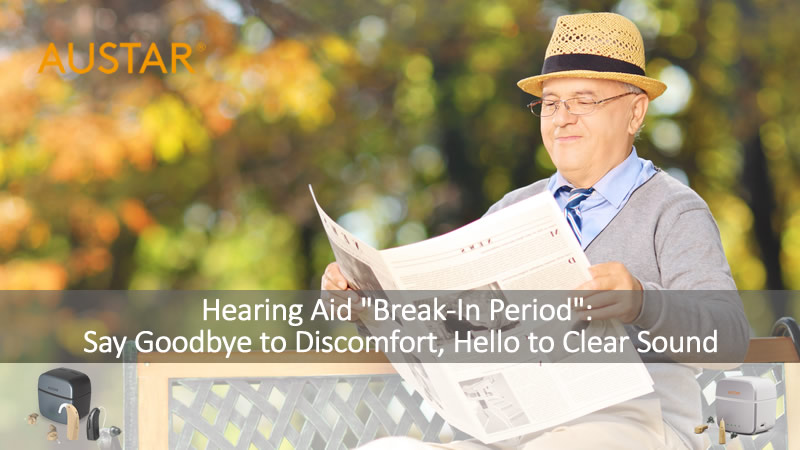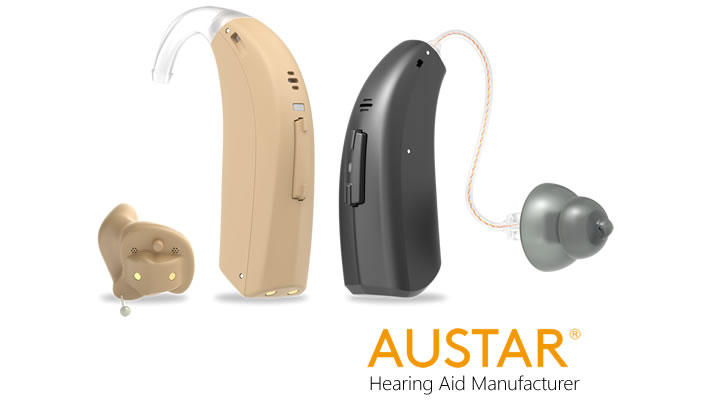- Home
- Hearing Loss
- Hearing Aid Use And Care
Hearing Aid "Break-In Period": Say Goodbye to Discomfort, Hello to Clear Sound
2025-07-16For users who have never worn hearing aids, they may experience discomfort such as ear itching, ear pressure, unnatural sound, ear fatigue, etc. when wearing them for the first time. Don't panic! These initial discomforts are normal. So what exactly causes these discomforts, and how to deal with these reasons, so as to get through the "running-in period" of hearing aids, say goodbye to ear discomfort, and enjoy a clear world.

1. Ear canal pressure or pain
As a foreign object, the ear canal needs time to adapt to its pressure. For custom hearing aids, this discomfort is more common, and possible reasons include: inaccurate ear impressions and incorrect wearing methods. When taking ear samples, users may chew, talk, etc., or the ear sample material may expire, resulting in the size or shape of the ear impression not matching the ear canal. This makes the custom machine shell not fit the user's external ear canal, causing ear canal discomfort or even pain when wearing. When wearing for the first time, some users will force the earplug or custom machine into the external auditory canal to prevent the hearing aid from falling off, causing the top of the earplug or custom machine to contact the wall of the external auditory canal, causing pressure on it and causing pain. The correct way to wear it is to place the earplug or custom machine normally in the ear canal to ensure that there is no sound leakage.
2. Ear itching
Some users may feel ear itching, which may be caused by friction between the hearing aid and the skin of the ear canal or an allergic reaction. Since most hearing aid earplugs or custom machine shells are made of anti-allergic materials, most allergies are not caused by hearing aid materials, but by continuous pressure on the skin of the external auditory canal when wearing hearing aids for a long time, which may change the lymphatic circulation in the ear canal, leading to the release of histamine, causing itching. In addition, if the size of the earplug selected for the user is inappropriate or the shell of the custom machine is thick when selecting a hearing aid for the user, it may cause more obvious pressure or friction on the ear canal, exacerbating the itching of the ear. Therefore, in order to alleviate the itching when the user wears the hearing aid, the fitter needs to ensure that the hearing aid or earplug is of the right size. If necessary, the ear mold can be re-customized or a smaller earplug can be selected.
3. Stuffy ears
When wearing hearing aids, stuffy ears are a common discomfort. This feeling is similar to the "blocked" feeling when blocking the external auditory canal with your fingers. This stuffy feeling may be caused by many reasons, such as wearing the hearing aid too tightly, the ear canal is not breathable, and the earplug is aged and degenerated. When the ear canal is completely blocked, such as wearing a hearing aid or earplug, the low-frequency reflection of the sound in the ear canal will be enhanced, making the wearer feel that his voice is amplified, resulting in a stuffy or echoing effect. Especially when the size of the custom machine or earplug is not suitable, it is easy to cause wearing too tight, aggravating the stuffy feeling. If the user has good low-frequency hearing, the low-frequency gain should not be compensated too much. The custom machine needs to open the vent, and the behind-the-ear machine can use an open earplug to increase the leakage of low-frequency sound and relieve the stuffy feeling. In addition, the aging and stiffness of the earplug can also cause it. Under normal circumstances, the earplug is elastic, soft, and breathable, but the aging and stiff earplug loses this part of the function, resulting in pressure on the ear canal when worn, resulting in a stuffy feeling.
4. Your own voice sounds strange
Some users feel that their voices sound strange after wearing hearing aids, which is caused by many factors.
- When wearing hearing aids, earplugs or ear molds will block the external auditory canal to a certain extent, changing the acoustic characteristics of the ear canal. This makes it impossible for low-frequency sounds that can usually be emitted through the ear canal to be discharged normally, just like covering your ears with your hands to speak, which will produce muffled sounds, echoes or hollow feelings.
- Hearing aids will amplify all sounds. Usually, we hear our own voices through a mixture of bone conduction and air conduction. But hearing aids mainly amplify the sound of the air conduction part, which breaks the original sound balance and causes an imbalance in sound perception.
- For those who have long-term hearing loss, they may have gradually forgotten what "normal" sounds are like. When they suddenly hear clear sounds through hearing aids, especially their own voices, they will feel a little strange.
5. Unnatural sound
When you wear a hearing aid for the first time, the sound may feel unnatural, even a little sharp or harsh. This is because the brain needs to readjust to the sound, and long-term hearing loss will cause the brain's ability to process sound to gradually weaken. When wearing a hearing aid, the brain needs to relearn how to process the amplified sound signal. Therefore, even with a hearing aid, the sound may sound a little strange or unnatural at first. In addition, there is a difference between the way hearing aids amplify sound and the natural way the human ear processes sound. As an auxiliary listening tool, hearing aids receive sound through a microphone, then adjust and amplify the sound signal through a processor, and finally transmit the sound to the ear canal through a speaker. This process is different from natural hearing and may cause the sound to sound a little "electronic" or unnatural. For example, hearing aids may amplify certain frequencies of sound and ignore other frequencies, which is different from our natural sense of balance in hearing. This situation can be improved through adaptation during the adaptation period and hearing rehabilitation training, which can help the brain better process sound signals and improve speech comprehension.
6. Auditory fatigue:
Auditory fatigue refers to the fatigue of the brain after a long period of hard work to process sound. For people with hearing loss, the brain needs to work harder to understand the sound after not receiving complex sounds for a long time, especially in a noisy or complex environment. Long-term listening can easily lead to auditory fatigue and even headaches or dizziness. Therefore, for first-time wearers, they should choose a quiet environment to communicate, and give themselves some quiet time after long-term auditory activities to let the brain and ears rest.
The above discomfort is usually temporary. Most problems will gradually ease with the increase of wearing time and the advancement of the adaptation process. It is recommended that you start with only one or two hours a day, gradually increase the wearing time until you can wear it all day, and gradually transition from a quiet environment to a complex environment. However, if you feel uncomfortable after wearing a hearing aid, and this discomfort has not improved after a period of adaptation, it is recommended that you go to a professional fitting center in time and consult a professional fitting technician or audiologist. Use professional equipment and technology to debug the hearing aid to improve the comfort and clarity of wearing. Say goodbye to ear discomfort and enjoy a clear world.

As a leading hearing aid manufacturer in China with more than 20 years of experience, AUSTAR Hearing looks forward to working with hearing aid distributors who pursue excellence to jointly explore a broader hearing aid market, achieve win-win cooperation, and make every cooperation a milestone in your business growth.
Latest
- 4 Essential Communication Rules for Family Members of Hearing Aid Users
- Hearing Aid "Break-In Period": Say Goodbye to Discomfort, Hello to Clear Sound
- The ultimate guide on how to choose hearing aids for seniors
- In addition to performance, how do parents choose children's hearing aids?
- Hearing Care Professional: How Do You Maintain Your Hearing Aids Regularly?
Hearing Aid Use And Care













All 0 comments